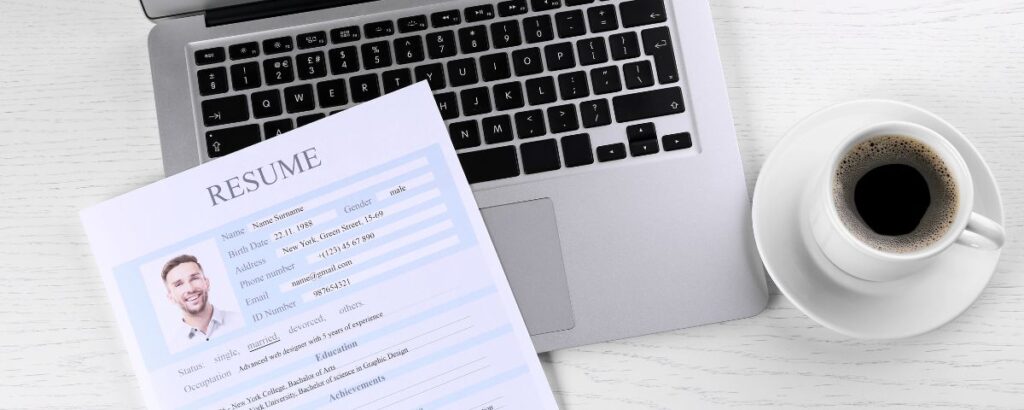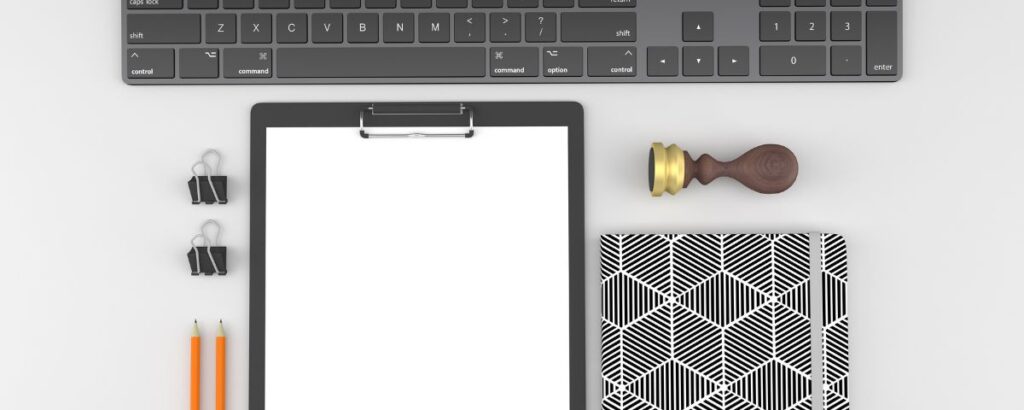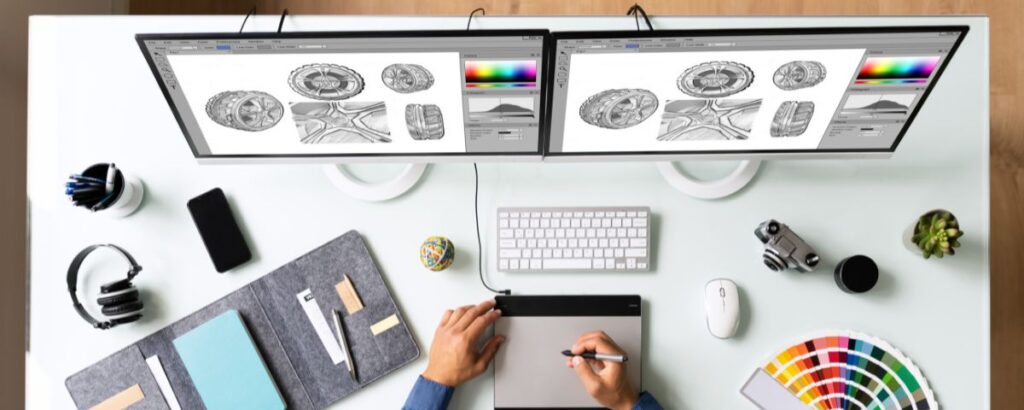
The Ultimate Guide to Adding Certifications in Resume for Freshers
July 27, 2025
Resume Checklist for Freshers: Things to Check Before Submitting Your Resume
August 10, 2025Top Creative Resume for Design Students: Examples and Tips for Success
As a graphic design student, you can turn your resume into a mini portfolio that showcases both your style and skills. A creative resume for design students is essential to stand out in a crowded field. After all, the global graphic design market is huge and competitive – valued at over $60 billion – so crafting a resume that grabs attention can be your ticket to that dream internship or job. Use design elements to your advantage: for example, picking a template from Canva or Adobe Express that matches your personality lets you display your layout abilities and artistic flair right away. You can customize these templates by editing colors, fonts, and layout to reflect your unique personality and make your resume truly your own.
Beyond looks, make sure your resume highlights what you can do. List your technical skills prominently – things like Adobe Illustrator, Photoshop, and InDesign – so employers see you’re job-ready. Many resume guides stress balancing creativity with concrete abilities: for instance, include “Adobe Creative Suite proficiency” under skills. This tells recruiters you have the hands-on software expertise to execute projects.
Don’t forget to link to your work. A strong online portfolio lets recruiters instantly view your best designs. Include a clear link to your Behance or personal website in the contact section. In fact, career experts advise putting a “link to your professional portfolio” right up top with your name and email. That way, anyone reviewing your graphic design student resume can click through and see your projects at a glance.
Keep looking for inspiration by exploring different templates. Experiment with layouts and colour schemes until you find one that suits you. Platforms like Canva and Adobe Express offer hundreds of free, customizable graphic design resume templates. By browsing these examples, you can learn how to balance text and graphics, and then make the design uniquely yours. Explore additional resume examples and resources to find inspiration and stay updated on industry trends. The right template can give your resume a cohesive style without you starting from scratch.
Always aim for visual appeal. A good resume isn’t just a wall of text – it guides the eye. Use white space to separate sections, add subtle colour accents for headings, and consider small icons or your personal logo to reinforce your brand. For example, you might put a tiny computer icon next to your “Skills” section or a pencil icon by your “Education.” These touches can make the document more engaging. Enhance your resume by incorporating illustrations and visual assets to make it more creative and eye-catching. Just remember not to let design gimmicks overwhelm the content – the goal is to highlight your personality while still being readable.
Having a polished, creative resume is crucial in today’s market. Employers often skim dozens of applications, so yours needs to make a quick, positive impression. An impressive resume with creative design elements can help you stand out and increase your chances of landing your dream job. A visually pleasing design shows you’re serious about your craft, and clear organisation makes it easy to spot your key qualifications. As one of my post puts it, in a fierce market, “it’s even more important to craft a resume that grabs attention”. By blending strong design with concise content, you’ll confidently set yourself apart from other applicants.
Crafting a Strong Resume
When writing your resume, tailor it to the specific role you want. Read the job or internship description and mirror its language in your resume, making sure to use industry-specific language to align your resume with employer expectations. Start with a brief summary or objective that acts like an elevator pitch: two or three sentences about who you are and what you bring. If you have some experience, use a summary to highlight your major achievements; if you’re entry-level, an objective can outline your career goals. As one guide explains, a summary is ideal for experienced designers, while an objective is a roadmap for newcomers. For example: “Aspiring graphic designer with strong Adobe skills seeking to apply creativity and technical knowledge at [Company Name].” This immediately shows you know the tools and are goal-driven.
Next, list your core skills clearly. In one section, bullet your hard skills (like software programs) and soft skills (like communication). Balance both so employers see you’re well-rounded. In fact, experts emphasise that “highlighting your skills and relevant certifications is essential” on a resume. So include items such as “Adobe Photoshop (advanced)”, “Typography and layout design”, or “Client communication”. If you can, back these up with quick examples. For instance: “Led a team to redesign a club logo, incorporating feedback to align with brand vision.” That shows you can work with others and deliver results. Additionally, highlight your ability to collaborate effectively, manage deadlines, and deliver impactful work—qualities highly valued in the graphic design industry. For inspiration, check out the creative resume example above by designer Nemish Zawar. Notice how colour blocks break up the sections: a subtle blue band highlights the name and title at the top, and orange headings draw your eye to each section (Experience, Education, Skills, etc.). Despite the graphics, the text remains easy to read. Each job title, date, and bullet point is clearly separated. This example proves you can add design flourishes without losing clarity. You might similarly include a small icon next to your contact info or section headers – it adds personality while guiding the reader’s eye. Ultimately, Nemish’s resume shows that playful elements like colored backgrounds and icons can work with the content to make an impression, rather than distract from it.
Always keep your layout user-friendly. Use standard fonts (Arial, Calibri, or Helvetica) for body text so everything is legible on screens and in print. Align everything neatly in columns or sections. Bullet points and short paragraphs make it easy for someone to scan your resume quickly. Use one- to two-column designs for more complex info, but make sure the most important stuff (like your name and key skills) is prominent. The goal is a balance between creative formatting and straightforward readability.
Education and Certifications

Your education section shows recruiters your formal background. List your degrees in reverse chronological order (newest first). For example, write your Bachelor of Fine Arts in Graphic Design, the name of the college, and your graduation year. A bachelor’s degree is often a key requirement for entry-level positions in graphic design and should be clearly presented in your resume. You can also note any relevant coursework or projects here if it adds value. For instance: “BFA in Graphic Design – XYZ University (2024). Relevant coursework: Typography, Web Design.” If you studied under notable professors or completed a senior thesis, include a brief phrase about that experience. This makes clear what you learned and when.
Below education, feature any certifications. These boost your credibility as a designer. List things like “Adobe Certified Professional in Photoshop” or an “Adobe Illustrator Certification,” which validate that you truly know the software. Hloom’s resume guide points out that showcasing an Adobe certification “validates your expertise in using their design tools”. You can also include certificates from online courses (e.g. Coursera’s Graphic Design Specialisation) or bootcamps. In short, under Certifications, add any badges that prove you’ve gone the extra mile in learning.
Don’t forget achievements and awards. If you’ve won a design competition, a scholarship, or any recognition, put those in a separate small section or under education. Wix’s tips advise listing any awards or press to strengthen your application. For example: “Artworks Magazine Student Award – 2023” or “First Place, Campus Poster Contest (2022)”. Even school honours count: “Dean’s List (2021-2024) – academic excellence”. These items tell employers that others have recognised your talent. Present them briefly (award name, issuing organisation, date) so they add prestige without taking up too much space.
Experience and Internships
When it comes to work experience, highlight anything design-related you’ve done. List internships, volunteer projects, or freelance gigs in reverse chronological order. For each position, include your job title (for example, “Design Intern,” “Graphic Design Intern,” or “Freelance Graphic Artist”), the organisation, location, and dates. Then describe what you did in bullet points. Focus on tasks and outcomes. Did you redesign a company’s logo or layout a newsletter? Mention it. Hloom suggests detailing responsibilities while emphasising design projects and teamwork. For instance, a bullet could read: “Created 5+ marketing flyers and banners for campus events, resulting in 30% higher student attendance.” Numbers like that show impact. Also note if you collaborated with others – e.g. “Worked with marketing team and content writers to deliver cohesive campaign visuals.” Employers want to see that you can work well in a team.
When describing your work, highlight your experience creating various visual and marketing materials from concept to completion. If you have experience with print materials, include that too. Perhaps you assisted with printing a brochure, designed posters for events or marketing campaigns, or coordinated with a print vendor. Any hands-on knowledge of how designs translate to print (bleeds, colour profiles, paper types) is valuable. Mentioning “managed relationships with print vendors to ensure accurate brochure production” adds depth to your skills. This shows versatility in both digital and physical media.
If you’re building your resume, seek more experience through internships, freelance work, or personal projects to strengthen your portfolio. Soft skills are important here. Graphic design is not just about tools – it’s about communication. In your descriptions, subtly highlight abilities like creativity, attention to detail, and communication. Enhancv’s guide on design student resumes calls these “important abilities” to mention. For example, you might write: “Adapted design based on feedback from supervisors and clients, improving final layout and colour scheme.” This tells the reader you can listen to input and refine your work. Emphasising how you handle revisions or explain ideas to non-designers will assure employers that you can navigate workplace dynamics. Remember, including a mix of creative and interpersonal examples will make your resume stand out.
Finally, always include your contact information and links to your online portfolio, making it easy for potential employers to assess your skills and experience.
Resume Layout and Format

A clean, professional format is key. Start with a neat header (your name and contact info) and clear section titles like Education, Experience, and Skills. Use consistent spacing and alignment so that each section is visually separate but coherent. White space is your friend: don’t cram text; give each element room to breathe. According to design resume advice, using whitespace and simple graphical dividers can make the layout interesting without clutter. For instance, a thin line or a block of colour between sections looks sharp and guides the eye. Use a single accent colour (from your personal palette) throughout to tie the design together.
Choose fonts that are easy to read. Sans-serif fonts like Arial, Calibri, or Helvetica work well for screen and print. Keep one font for headings and another (or a different weight of the same font) for body text. Avoid fancy or script fonts except possibly in your name or logo – you want the hiring manager to focus on the words, not struggle to read them. Remember, simple fonts also translate better if your resume goes through an applicant tracking system (ATS).
Pick a universally shareable file format. Save and send your resume as a PDF so it looks the same on any device. Recruiters often prefer PDFs to prevent formatting shifts. A PDF also gives a polished, final feel. It’s wise to have two versions: a creatively formatted one for in-person or email submissions, and a more traditional one for online forms. This way, you preserve your design when a real person is reading it, but also ensure the content is ATS-friendly if necessary. For more guidance on this topic, see the best resume format for freshers.
Speaking of ATS, be careful with graphics. ZipJob warns that applicant tracking systems can struggle with complex designs or images. So don’t load your resume with non-text elements or unusual layouts if you know it will be scanned by software. A trick is to overlay graphics in software, but also keep a plain text layer hidden for the ATS to read. In any case, it’s smart to have a fallback resume (simple one-column layout) if you need to apply through a strict online portal.
Entry-Level Graphic Design Resumes

If you’re just starting out, focus on your education and projects. Your entry-level graphic design student resume should showcase your degree (e.g. BFA or BA in Graphic Design), relevant classes, and any academic honours or extracurriculars. Begin with an objective or summary that highlights your enthusiasm and key skills (e.g. “Creative graphic design student adept at Photoshop and Illustrator, seeking to build real-world experience through a summer internship.”). Then list your internships, part-time jobs, or volunteer roles – even if they weren’t strictly design jobs- frame any creative or collaborative aspects. For example, if you interned in a marketing department, describe how you assisted with design tasks or learned about visual branding.
Include a Portfolio Showcase section if possible. You can briefly describe a class project or provide a link. Hloom suggests devoting a section to your best design pieces or linking directly to your online portfolio. For instance: “Portfolio: A link to an online gallery with three projects, including a poster design and a brand mockup.” This signals confidence in your work. Even listing “Selected class projects on personal website” under Experience or Projects will do – it gives something tangible for employers to check.
Remember to keep it concise. An entry-level resume generally fits on one page. Employers know you are a student, so they don’t expect decades of work history. Instead, they want to see your potential. Emphasise that you are eager to learn new tools and adapt. Phrases like “quick learner” and “team player” are useful. And use a layout that highlights key information: name and contact at the top, then education, then skills and projects. If using a template, pick one meant for students or new professionals, which often have sections already labelled for coursework or internships. This ensures you don’t forget to include the basics like contact info, education, and even a short “Interests” or “Activities” section if space allows. In short, you can create a compelling graphic design student resume even without years of experience by focusing on your relevant strengths and achievements.
What Makes a Great Graphic Designer

Think of your resume as a mini portfolio: it should reflect the qualities of a great designer. First, emphasise hard skills – those are the technical tools you’ve mastered. List software you’re fluent in (Adobe Photoshop, Illustrator, InDesign, After Effects, etc.) as well as any coding or web design skills if you have them. Employers know that strong hard skills “demonstrate your technical competence and reduce training needs”. For example, stating “Proficient in Adobe Creative Suite” or even better, “Adobe Certified Professional – Illustrator (2024)”, immediately tells them you can hit the ground running. Highlighting certifications like an Adobe credential is a great idea, too, as it “validates your expertise”. These details assure employers that you bring existing talent to the table.
Next, show your creative mindset. A top designer has a keen eye for detail and original ideas. If you have a speciality (say, UI/UX, branding, or illustration), mention it in your summary or skills. Make sure your resume itself looks polished – good alignment, no typos, and balanced elements. This subtly demonstrates your attention to design quality. Additionally, soft skills are part of what makes a designer stand out. Are you good at listening to feedback and improving your work? Note that you can “communicate concepts clearly” or “collaborate with cross-functional teams” in your descriptions. Enhancv’s guide highlights “creativity, attention to detail, and strong communication” as key qualities. Wherever possible, weave those in. For instance: “Demonstrated creativity by developing multiple poster concepts; refined designs through client feedback.” This shows both your creative process and teamwork.
Finally, ensure your resume links to your portfolio. A resume can only say so much; seeing your work makes the strongest impression. As Hloom advises, add a direct link to your portfolio site in your contact info. You might even list one standout project in brief to draw interest. For example, under Skills or Projects, you could note “Developed logo and branding for a campus event (see portfolio)”. Your online portfolio is where you truly prove your graphic design talents, so make it easy for employers to find it. Use a clean URL (like your name or a dedicated Behance link) and double-check that the link works.
A great graphic designer is also adaptable and always learning. In your resume language, hint at this by saying you stay current with design trends or new tools. Mention if you’ve taught yourself something new (e.g., “Self-taught 3D modelling in Blender to expand skill set”). These lines signal that you’re proactive. In summary, combine your technical chops with an eye for aesthetics and clear communication. Let your resume itself be a testament to your style, while the words within highlight your creativity and skills.
Conclusion and Final Tips
Before you send off your resume, do one last check: tailor it and polish it. Review the job title and company, and tweak any keywords in your document to match. Use a straightforward layout with headings so that an employer can quickly find what they need. As always, emphasise your strongest skills – for example, “Fluent in Adobe Illustrator” or “Experienced in HTML/CSS” – to catch the eye. Also, remind yourself to emphasise your learning agility: you might say that you’re “eager to learn new design techniques.” In general, most experts recommend keeping your resume to about one page if you’re a student (two pages is the absolute maximum) and making every word count. Concise and clear win over fluff. For freshers, don’t forget that a standout cover letter for your resume can make a strong first impression and boost your chances.
Don’t forget to add that portfolio link one more time. Some design resume templates include a section just for links or QR codes. This can be a neat way to make sure hiring managers click through. And speaking of templates, take advantage of what’s available. Adobe Express offers fully customizable resume templates designed for graphic professionals (and they’re free). Canva also has a wide range of creative, editable designs. Using these resources means you can start with a solid structure and just plug in your info. You’ll still customise colours and fonts to match your personal brand, but the hard work of balancing sections is already done.
Above all, be confident in your creative skills. Your resume is a reflection of you – let it show your passion and personality. Before submitting, proofread carefully and even have a friend or mentor look at it. A fresh pair of eyes might catch a typo or a confusing layout. Finally, write the content in a friendly, second-person tone when you review it: think of yourself as talking to the reader, guiding them through your story. By tailoring your graphic design student resume to each opportunity, using a clear, professional layout, and highlighting both your technical and creative strengths, you’re setting yourself up for success. With a standout creative resume in hand, you’re ready to impress employers and land that next design opportunity.




